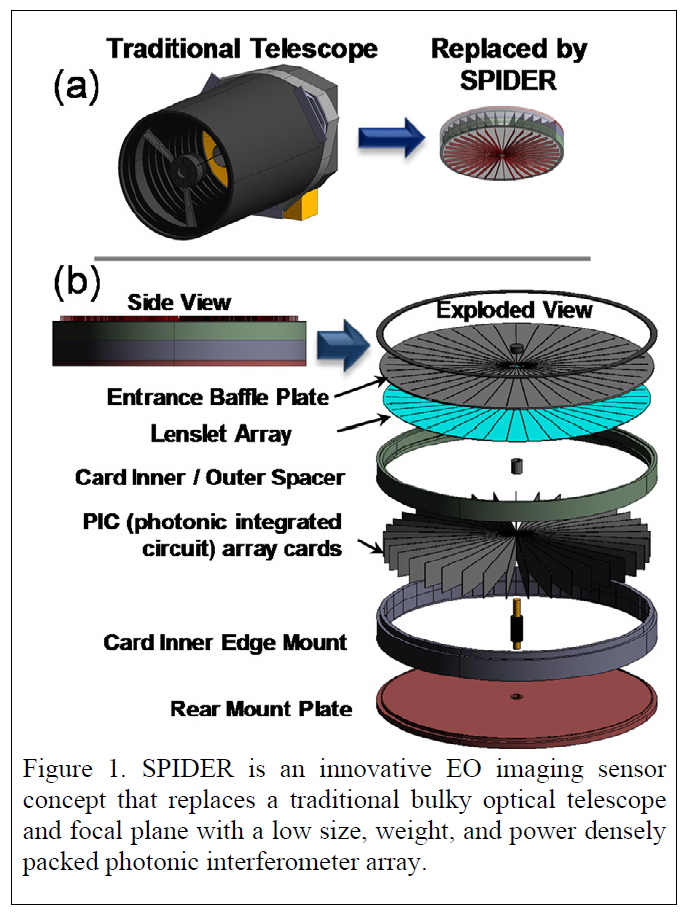Ben S.J. Yoo
University of California, Davis
Presentation: Low-Mass Planar Photonic Imaging Sensor
Description
We propose a revolutionary electro-optical (EO) imaging sensor concept that provides a low-mass, low-volume alternative to the traditional bulky optical telescope and focal plane detector array. This imaging sensor concept consists of millions of direct detection white-light interferometers densely packed onto photonic integrated circuits (PICs) to measure the amplitude and phase of the visibility function at spatial frequencies that span the full synthetic aperture. Our approach replaces the large optics and structures required by a conventional telescope with PICs based on emerging photonic technologies that are produced by standard lithographic fabrication techniques (e.g., CMOS fabrication). By integrating advanced optical interferometry and photonics technologies, this new EO imaging sensor concept enables exciting new NASA missions since it provides a large-aperture, wide-field EO imager at a fraction of the cost, mass and volume of conventional space telescopes. As part of the Phase II investigations, we will study several areas tailored to potential NASA missions and requirements. These studies include (1) investigate major feasibility issues associated with the cost, performance, development time, and key technologies related to SPIDER in NASA missions, (2) provide image simulations for a variety of SPIDER design configurations for three important next generation NASA missions; Europa, Mars Reconnaissance orbiter (MRO), and near-Earth orbit (NEO) detection, (3) develop a technology roadmap that includes key risk mitigation activities that address NASA mission needs, (4) leverage DARPA funded efforts to pursue photonic spectrometer risk mitigation experiments. The work will leverage recent efforts at UC Davis and Lockheed Martin that include NIAC Phase I and DARPA program activities. In Phase II, we will continue to investigate, demonstrate, and report on a non-traditional EO telescope with photonic imager for the Jupiter icy moons orbiter reference mission. Highly complementary to that work, in Phase II we will investigate SWIR integrated photonic spectrometer instruments to support the low size, weight, and power requirements for multiple NASA missions. We will use the momentum and knowledge gained in Phase I, to develop a highresolution, low-SWaP imager concept for the NASA MRO mission and an imager and spectrometer for the NASA NEO detect and characterization mission.































